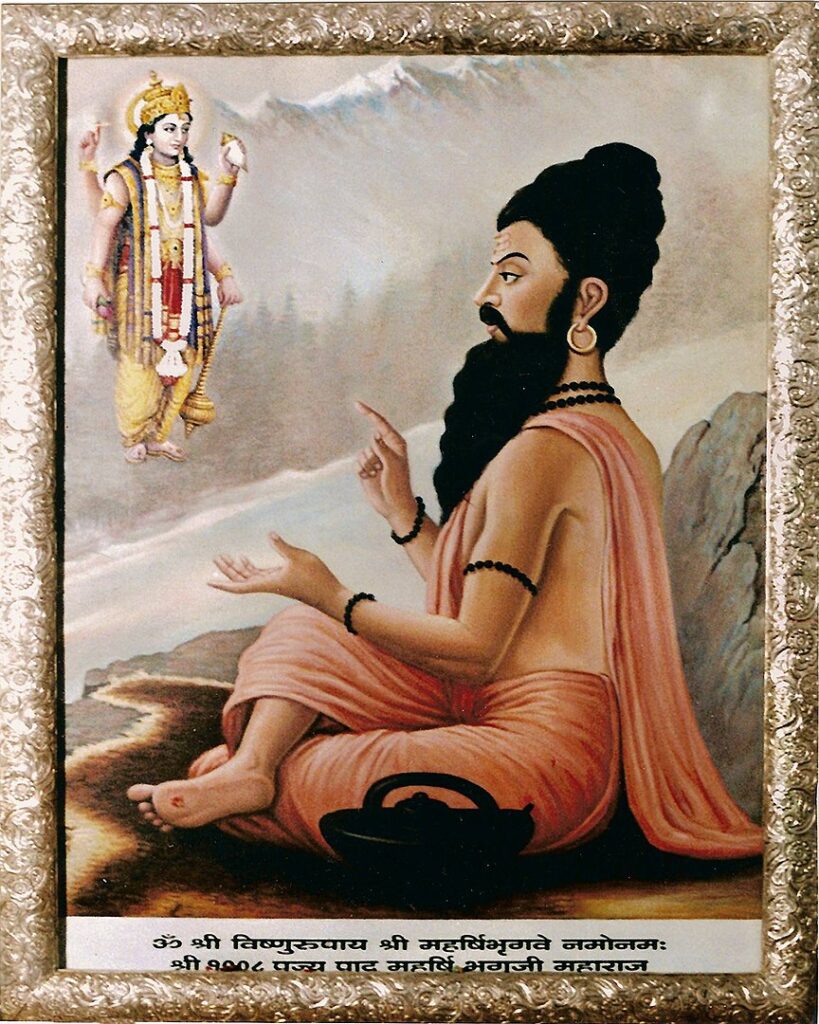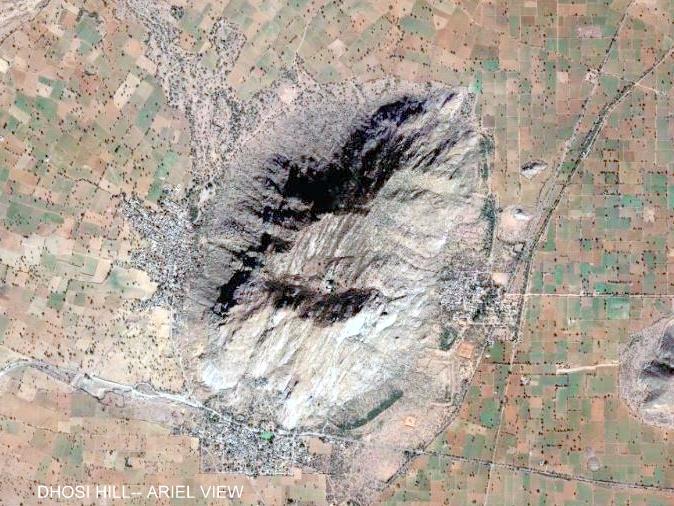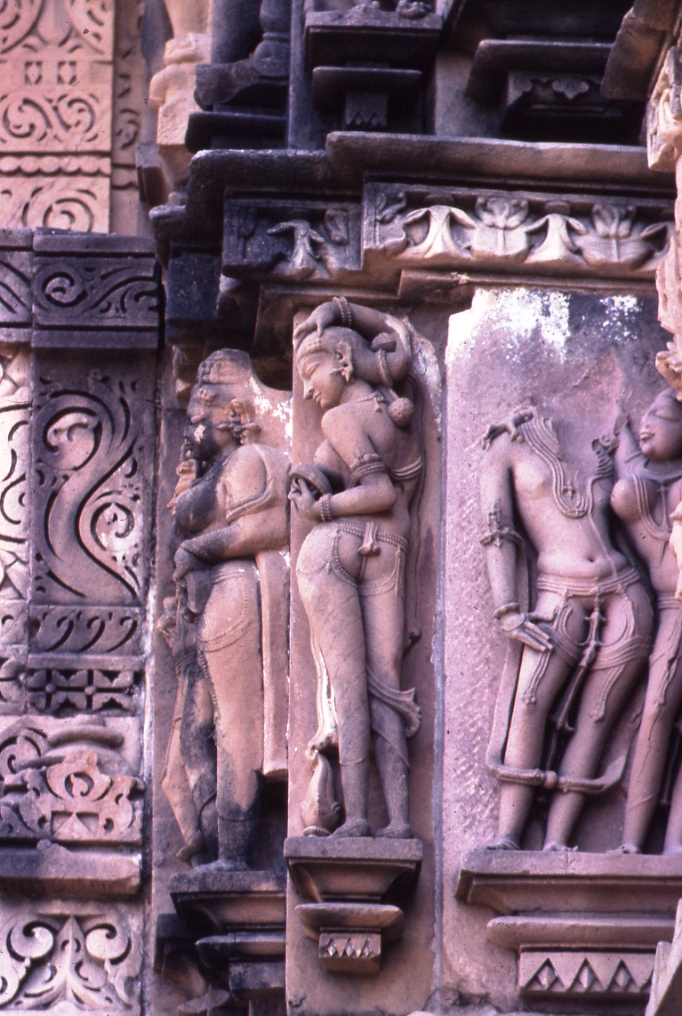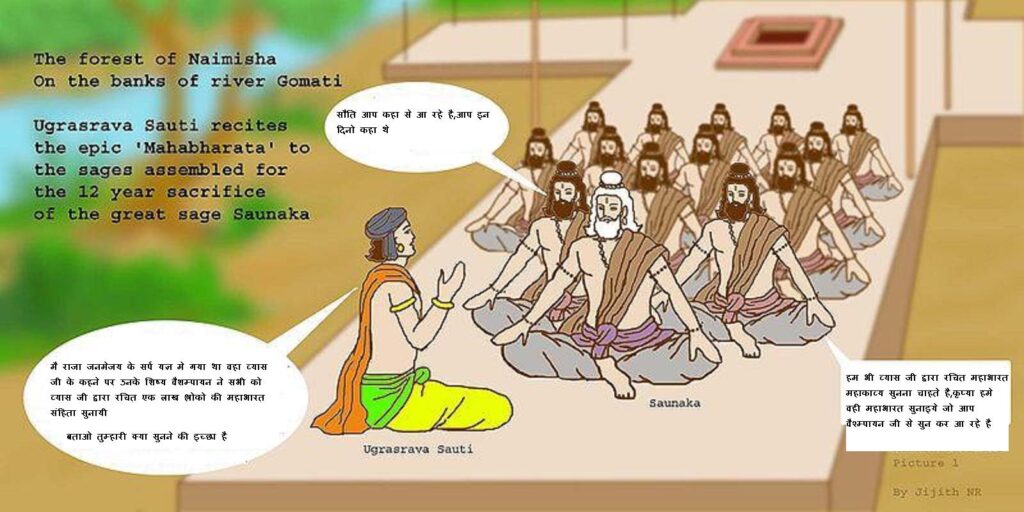
Note: In the previous post, after narrating the story of Uttanka going to meet Janamejaya to seek revenge on the serpent king, Takshaka, Sauti asked the ascetics in Naimisha forest which story they wanted to hear next. Saunaka Kulapati, the chief sage, expressed an interest in hearing the story of Sage Bhrigu’s race. In this post, Sauti provides a brief description of Bhrigu’s family.
However, before returning to Sauti’s narration, let’s first learn a bit about Bhrigu’s background.
Sage Bhrigu is one of the saptarishis and also one of the many prajapatis (facilitators of creation). In the Bhagawad Gita, Lord Krishna identified Bhrigu as one of his vibhutis (divine manifestations).
Sage Bhrigu was the first person to write a treatise on predictive astrology, called the Bhrigu Samhita.
It is believed that Sage Bhrigu’s hermitage (called Deepotsaka) was located near Dhosi Hills, which are on the north-western end of the Aravalli range near the border of Haryana and Rajasthan.

The following words were spoken by Sauti to Saunaka Kulapati and the ascetics in Naimisha forest to describe Sage Bhrigu and his family.
We are told that the great and blessed saint, Bhrigu, was created by Brahma from the fire at a sacrifice conducted by Varuna.
Sage Bhrigu had a son whom he loved very dearly. His name was Chyavana.
Chyavana had a son called Pramati.
Pramati had a son called Ruru who was born from the union of Pramati and the celestial dancer, Ghritachi.
Ruru (the son of Sage Pramati and Ghritachi) was married to Pramadvara. They had a son called Sunaka.
Ugrasrava Sauti addressing Saunaka Kulapati said, “O Saunaka, this great sage, Sunaka, was your ancestor. He was extremely virtuous, devoted to asceticism, proficient in law, and famed among those who possessed knowledge of the Vedas. This reputed sage was truthful and well-balanced in his behavior. ”
This ends Sauti’s brief description of Sage Bhrigu.
Read the note below for more information about Ghritachi and the apsaras.

Note: Apsara Ghritachi was responsible for the birth of many virtuous children on earth. Along with furthering Sage Bhrigu’s lineage by having a son with Sage Pramati, she was also the mother of Nala. She also furthered the Puru dynasty by having ten sons with a descendant of Janamejaya called Raudrasva.
The Natya Shastra, an ancient treatise on performing arts, composed by Bharat Muni mentions several apsaras. Some of them are: Manjukesi, Sukesi, Misrakesi, Sulochana, Saudamini, Devasena, Manorama, Sudati, Sundari, and many others.
Previous: Ugrasrava Sauti Asks the Ascetics of Naimisha Forest Which Story They Want to Hear Next
Next: A Rakshasa Abducts Bhrigu’s Wife
Image Credits:
- The image of Sage Bhrigu is from Bhrigu Stotram. It was made available in the public domain by Shrimati Satish Janardhan Sharma and Dr. Pandit Ramanuj Sharma of Hoshiarpur, Punjab, India.
- The image of Dhosi Hills was made available in the public domain by Sudhirkbhargava.
- The image of the Devi Jagadambi Temple was made available in the public domain by Benjamín Preciado Centro de Estudios de Asia y África de El Colegio de México.



